|
|
|
 |
Maple Syrup |  |
|
Jason Scott's and John Fairbairn's maple syrup operation Maple syrup comes from the sap of hard maple (Acer Saccharum) trees. The sap is generally 2% sugar and 98% water; which means it normally takes 40 gallons of sap to make 1 gallon of syrup; however, some years it is worse and can be as high as 75 gallons of sap to 1 gallon of syrup. We collect it by drilling a small hole (5/16 in diameter) about 1 in into the cambium of the tree, inserting a small spout in that hole, and allowing the sap to flow down our network of tubing and into stainless steel storage tanks. We also use a vacuum system to enhance flow and alleviate some of the worst downturns during the season. Sap typically flows when the weather has been below freezing at night and above during the day. The best time of year for us is between mid-February and beginning of April. Once the sap is in the holding tanks, it gets transferred to the evaporator to boil off most of the water. The evaporator gets it to about 1 degree of syrup (which is 7 degrees F above the boiling point of water). We then draw it off and put it into the finishing pan to get perfect. Then we filter it through our filter press, getting and sugar sand out of the syrup, bottle it, and then you enjoy it on your pancakes. |
|
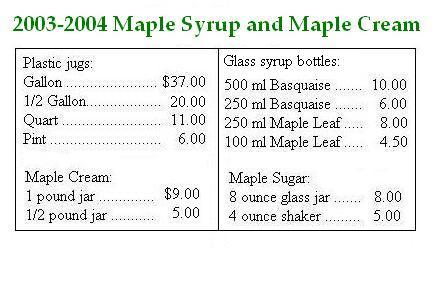 |
Maple Syrup price list 2003 - 2004 These are the prices for maple syrup and other products. We now accept credit cards through PAYPAL!! To order, simply go to the "SHOP ONLINE" page on this site, click "add to cart" for any products you want and shipping will be added in automatically, and send payment through PayPal's secure website. You will be asked for your shipping address and we will ship your order as soon as possible. To contact us, use the Contact Us page, or:
|
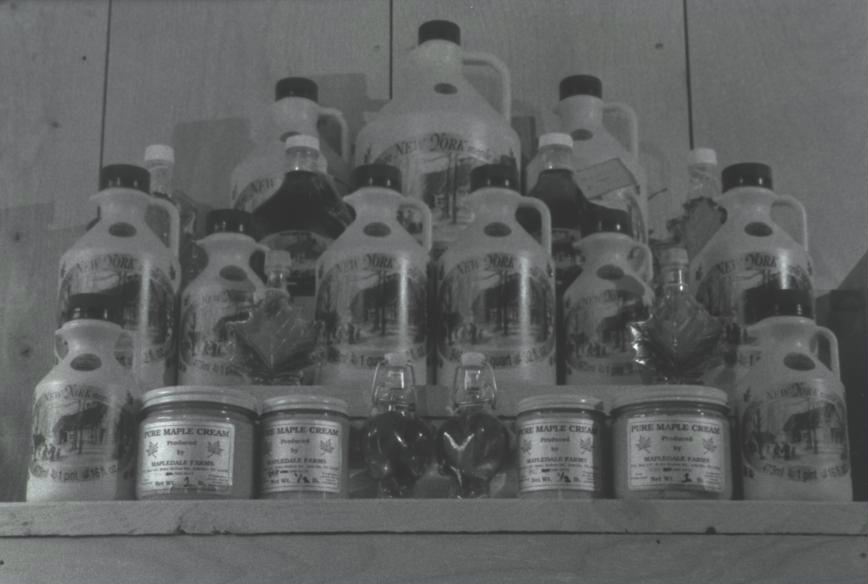 |
Boiling --- STEAM
These are the jugs we use on display. The plastic jugs are the main vessels for quantity buyers, but they look really nice, too. We have also started to use a new style jug that is blue and cream in color and a little shorter in stature. The glass jars - the maple leaf design, log cabins, hearts, and the Basquaise are great for gifts to those who know syrup and those who do not. The syrup will keep for years, if not decades, in glass jars. The small leaf bottles and the hearts make wonderful party favors for weddings, etc. You can also see our maple cream jars in the front row, maple cream is a gift of the god(s), perfect sweetness, texture, and applicability - on toast, pancakes, English muffins, and anything else you can think of. |
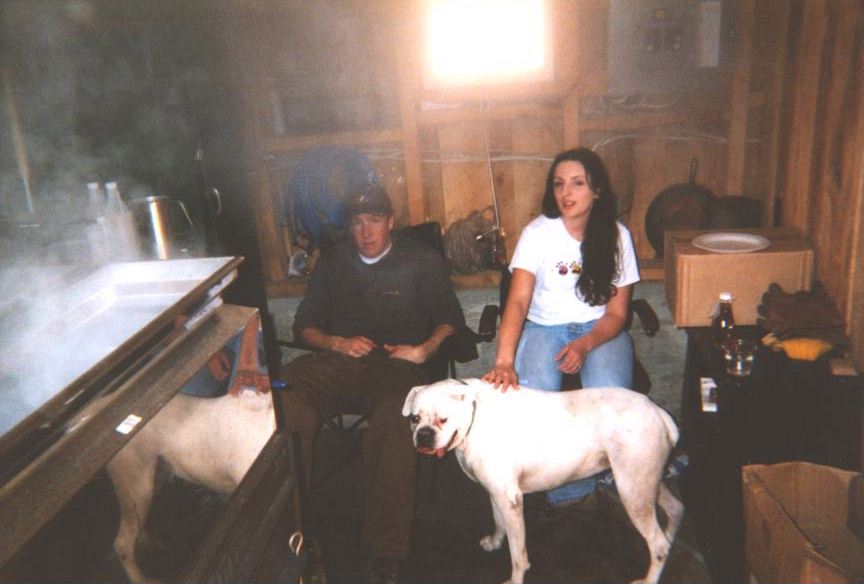 |
Jason, Courtney, Willie At left is Jason. The lovely woman to his left is my wife (this is John speaking now) Courtney. And of course our favorite syrup dog - Willie. They are watching the evaporator during the boil. |
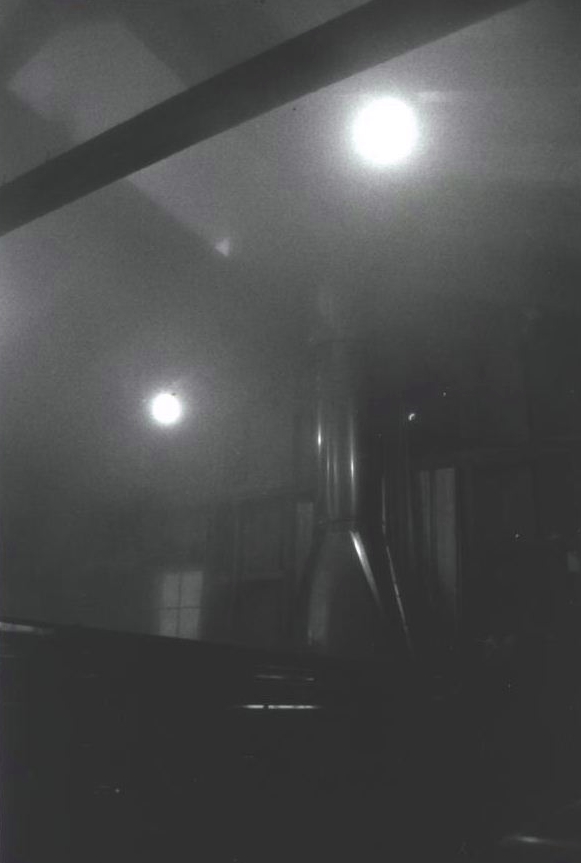 |
STEAM This is the typical view of the sap house from the inside - so much steam one cannot view one's hand when one's hand is positioned only inches from one's face. In other words, it gets really steamy and visibility is down to nothing. You can see the gleaming stainless steel stack in the background - that is the smokestack. This evaporator can boil off 100 - 110 gallons of sap per hour with good, dry wood.
|
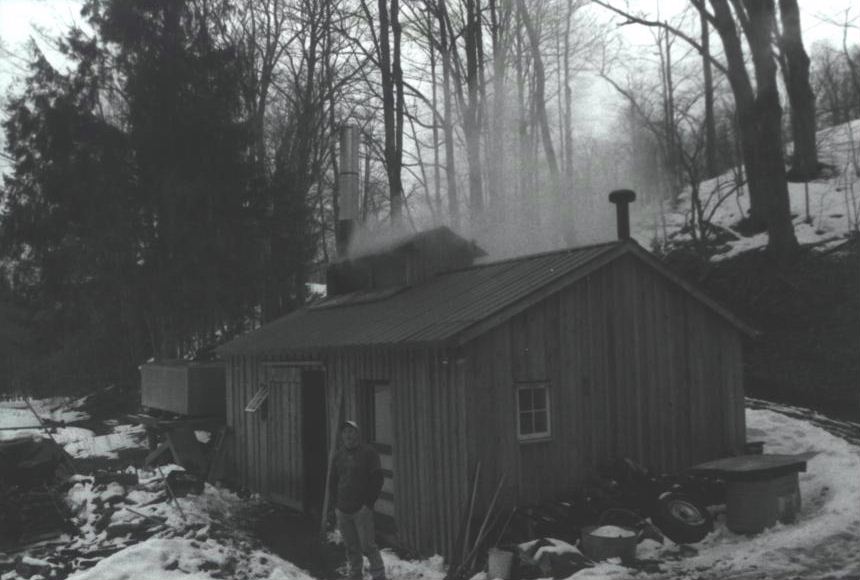 |
Jason standing in front of saphouse Here is Jason posing for the camera in front of our sap house. As you can see, we are boiling - just look at the steam billowing out from that cupola. You can see that the weather is pretty typical for March - dark, gray, wet, cold, and muddy. But that weather is syrup weather. |
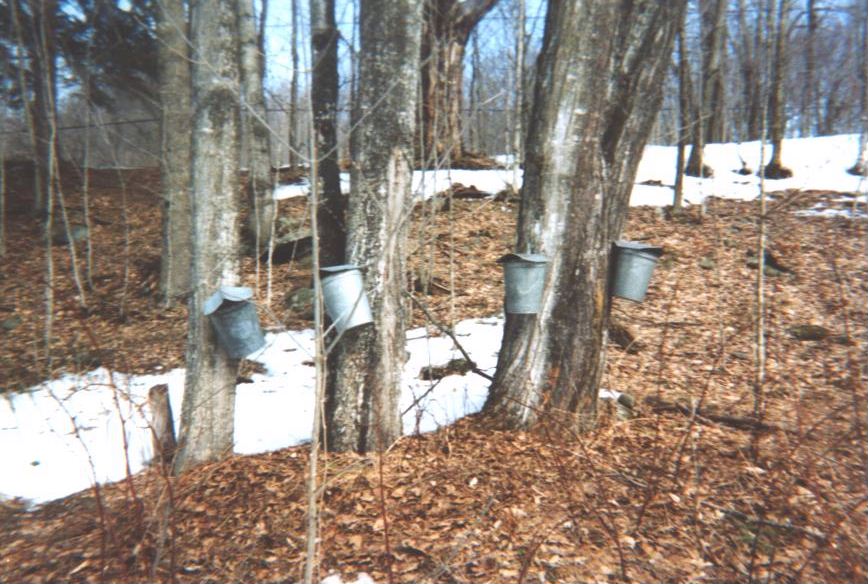 |
Sap buckets, drip...drip...drip...drip... This is the old way of gathering sap, we still use some buckets around the house and sap house. The new ways are more efficient for sap flow, man-labor hours, and allows us to tap more. It is also less-invasive because we don't trample everything as much with tubing. When you have buckets, you have to go to each one every day to collect the sap, dump it into a gathering tank on a truck or tractor, keep your roads clear of snow, and try not to get stuck in the March mud. Tubing is much simpler and is becoming the industry standard. |
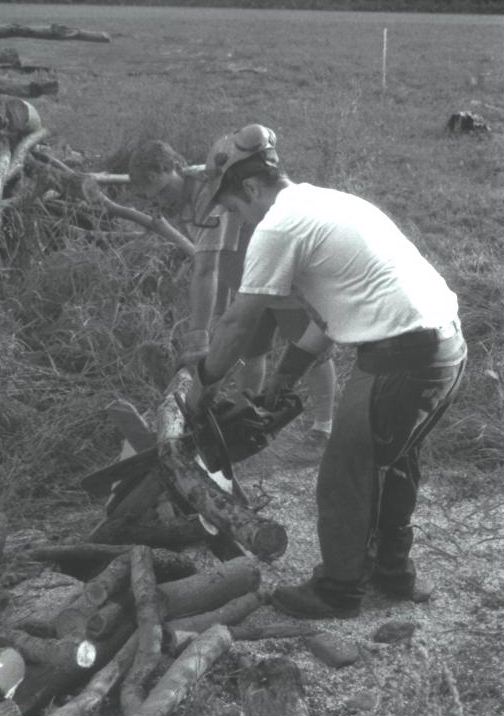 |
Jason and John cutting wood This is me (John) on your right in the chaps and helmet running the Jonsered 2050 chainsaw. Jason is running the poles of wood for me to cut up into 2' lengths. Normally we have the saw horse set up for one guy to feed while the other cuts; when the cut pile gets to big, we have to stop and stack. Ideally, we have three guys so one can stack while the other two cut. Here we are cutting up the firewood that the very hungry evaporator eats up. We have to amass millions of BTUs for sap season. We typically burn about 1 cord per 25 gallons of syrup we make - although that number can vary depending on sugar content, how dry the wood is, and even the weather on the days we boil. The drier the better, both the wood we are burning and the air - it "allows" more steam to saturate it easier. We are hoping that in summer 2004 we can put up a woodshed to house the wood - right now a tarp tries to keep it dry and that does the job somewhat adequately. But we just need enough time to throw up a pole-type shed. The wood we burn is from the trees and brush we clear from our fence lines and our sap bushes. In this way, the whole process is a cycle - we recycle and reuse everything. Even the leftovers from what is too small for sap wood we chip. Those chips then get used on the garden, to regrow grass on rocky areas, or my brother uses it for his dairy cows to lounge on. This is a big reason we do not see ourselves going to an oil-fired evaporator - we have a use for the wood that we cut. If we did not boil sap, we could chip more and probably would end up not using our resources as well. |